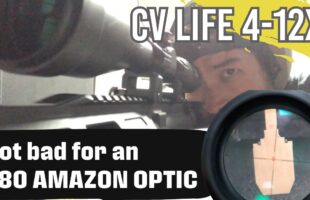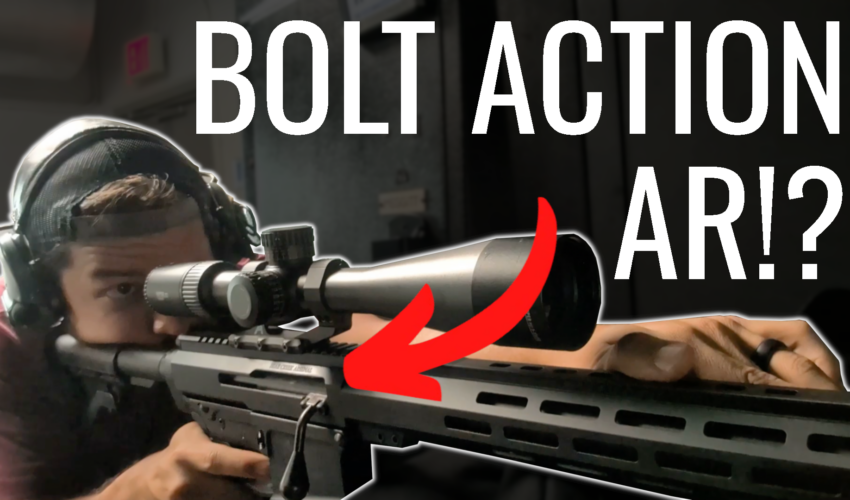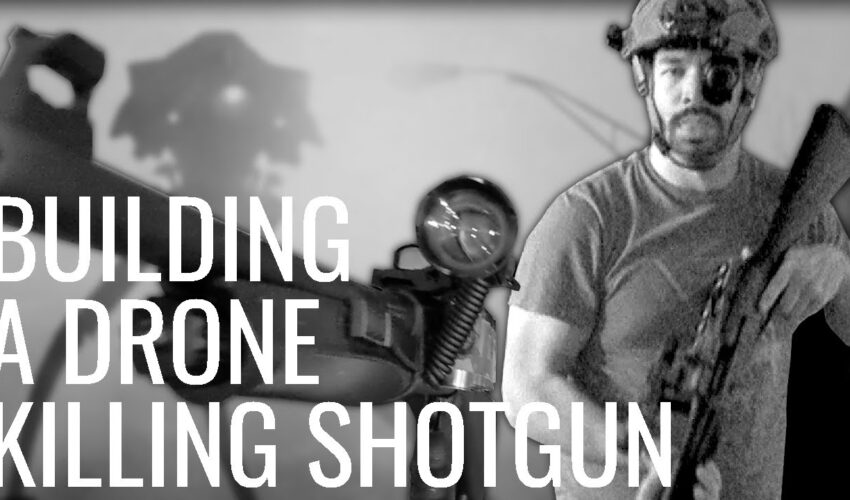Flying with Guns the Right Way Isn’t as Hard as You Might Think
If the thought of flying with a gun scares you, you aren’t alone. Surprisingly, the process it is a lot easier than you probably think. Today I’m going to go over all the basics of the entire process to help you feel confident if you need to travel with a firearm for any reason.
Guys this video is meant to just help clarify with helpful pointers and help demystify some of the stress of domestic air travel with guns. You absolutely need to do the research yourself on the laws of your locale, your destination, as well as what the current policies are from the TSA and the airline that you are flying on. This guide is typically only applicable to domestic travel as well.
Valid Reasons that People Might want to Fly with a Gun
Let’s first go into the reasons why people choose to travel with guns. The most common reason is for concealed carry at your destination. Depending on the laws of your destination and reciprocity with your state, concealed carriers will very frequently bring their EDC gun with them for short duration trips. It’s extremely common for anyone from tourists to businessmen to do this, and the process is actually quite simple if you’re only traveling with your carry gun.
Another frequent reason is to travel for a hunting trip. Oftentimes hunters will travel to specific locales to hunt a new type of game. Bringing your own rifle and gear is the preference of many.
Similarly, competitive shooters frequently travel long distances for regional and national competitions. Competitive shooting has become a huge sport in recent years, in fact our channel’s main focus is for competitive shooting, but as the sport becomes more popular, so does the need for air travel with firearms.
Lastly, its very common to travel distances for training needs, whether you’re a civilian or law enforcement. Just a few months ago I traveled across country to take a 2 day pistol course with Warrior Poet Society.
Even yet, some tickets are one way tickets for those who are moving. Many people will use moving services and then fly to their location. Most moving services do not allow transport of firearms, so oftentimes your only choice is to fly with your guns.
There are also probably even more reasons that we haven’t thought of or covered. There is no doubt, air travel with firearms is becoming more and more common.
The TSA has a very streamlined process for traveling with firearms
The TSA or transportation security agency has streamlined the process. It is actually very easy. Keep in mind you will need to look up all of the current federal laws, current procedures, airline policies, as well as the specific laws of your destination before proceeding. It is a good idea to have up to date paper copies of the airline policy and TSA policy for flying with firearms in your carry on bag, just in case on the off chance you encounter an employee who isn’t aware of the airline or TSA policy. I’ve never encountered this situation but I’ve heard horror stories, so I always carry copies of these documents just in case.
This Guide is meant to provide general tips, check the TSA’s website for the latest rules and procedures
Visit the official TSA Firearms page for the latest rules and procedures
Tip 1: There is no limit to number of firearms as long as they fit in your case. However there is a weight limitation on ammunition
First of all, there is no limit, except for weight restriction, on the amount of guns and ammo that you can travel with. Your firearm and ammunition need to be stored in a hard shell case with a lock. You need to put a lock on every part of the case that requires a lock. If I am bringing multiple pistols, I travel with an Apache 4800. If I’m traveling with only my concealed carry pistol, i’ll travel with a small Apache 1800 hard case, that I’ll place within a soft shell luggage. Some people recommend attaching a bike lock and looping it through the case to the luggage handle for extra security. This is certainly not a bad idea.
Tip 2: Make sure all Firearms and magazines are unloaded, ammo must be secured in original boxes or a plastic container made for ammo storage
All firearms need to be unloaded. Magazines need to be separated out. Any ammunition that you are traveling with needs to be in the original manufacturers box or a plastic container that is made for storing ammunition. It’s important to note that there is a limit to the total weight of the ammunition that you are carrying, you can only bring 11 lbs worth with you.
Tip 3: Firearms Cases must be hard shelled, small cases can be contained in a soft shell checked bag, but must still be declared at check in
If your case is small enough to fit in your soft shell checked bag, you can actually travel this way, with a single checked bag. But the cumulative weight will go against your luggage weight total, which is typically 50 lbs for most airlines.
Tip 4: You can check larger gun cases as a separate checked bag
If your case is too large to fit in the soft shell bags, you can check the container itself as a second checked bag. The Apache 4800 for example is too large to fit in my regular case, so I check it as its own case.
Tip 5: Get heavy duty, secure locks
Once you have your firearms cased, you’re going to want to lock the cases with secure locks. It isn’t recommended that you use the tiny “TSA approved locks” that are meant for regular luggage zippers, as the TSA approved locks can be easily opened by anyone. Instead, use beefier heavier duty locks. Some gun cases, like the apache 3800, have multiple spots for locks. You need to have a lock for each of these locations. Ideally your case will be one that is metal reinforced around the lock areas.
Tip 6: Make absolutely certain no firearms gear or accessories are in your carry on bag. Instead include these in a checked bag.
Make sure before you leave that you have no firearms related gear in your carry on bag, even if its just a holster. That is just inviting trouble. Instead, extra gear and accessories should be in your regular checked bag if you don’t have room for it in your gun case. Things like holsters, IFAK, competition belt, all this stuff, is okay to have in the checked bag. Again, not a good idea to try to carry on that stuff.
Tip 7: My preferred airline when traveling with firearms is Southwest Airlines
It’s for this reason that I like to fly southwest if possible. Their staff have always been respectful and knowledgeable in my experience when it comes to checking in firearms. They have sensible policies for traveling with guns. Their included 2 checked bags is super convenient for traveling with guns, as you can have one hard shell case, and one separate checked bag, which is plenty for most trips. The biggest thing is that their service counters are always staffed. I’ve tried to fly frontier or Spirit a few times and there have been absolutely no staff at the service counter, which is obviously a massive problem when flying with guns. Southwest’s “wanna get away” fares are usually extremely cheap as well.
Tip 8: Arrive 30 minutes earlier than you would if you were traveling without firearms
You’ll want to arrive at the airport with 30 minutes extra buffer for the firearms check in process, just in case. So if you normally arrive to the airport an hour before your flight, plan to arrive an hour and a half early. We’ll explain why later in the video.
When you get to the airport, you’ll want to proceed to the full service desk of your airline. You’ll need to declare that you are carrying firearms to your airline.
You can usually start by printing your bag tags and ticket at the kiosk, but when you proceed to check your bags in, you probably won’t, at least with Southwest, be able to just check the bags at the normal drop off. So find the full service desk, which is also sometimes labeled the help desk of the airline.
Tip 9: Be confident when approaching the check in desk
When you get to the desk or get to the employee, if this is your first time, you might be a little nervous. Note, just be normal. This isn’t a big deal, so don’t make it a big deal. Simply walk up to the counter, be courteous, a nice good morning how are you goes a long way.
Tip 10: Don’t say “I declare I have a firearm” to declare that you have a firearm, rather, just ask for a firearm declaration card
Then I will usually ask for a firearm declaration card, by saying something like “I’ll be checking in a firearm today, could I please have a firearm declaration card”. This way you aren’t saying something weird like “I declare I have a firearm”. If the employee is untrained in the airline’s procedure, the act of asking for a firearm declaration card will imply that there is a formal process that you are clearly trying to follow. It will catch them less off guard if they aren’t familiar with this process.
This card usually only requires some very basic information. You’ll typically put your name, address, from and to destinations, and flight number all on the card. They normally don’t ask you any questions about the items themselves.
It’s my experience that they don’t care what types of guns are in your case or anything like that, nor do they care about how many guns are in the case, other than standard weight restrictions.
Tip 11: The process is easiest if you don’t have any ammunition at all
After you fill out the card, they will ask you multiple times to verify that your weapons are unloaded and empty. I’ve never had them actually physically check at the counter. I’ve only ever had to open the case for the counter employee, show them what is in the case, then put the declaration in the case before closing up. You’ll then relock your case.
Tip 12: Large Airports usually have a better process than smaller airports
What happens next depends on the airport. At some airports, I’ve had an employee from the airline physically walk the case (with me in tow) to a special TSA scanning area. Airports that operate this way are really nice, because if TSA needs to open the case you will be right there. You get to watch the scan happen, and TSA will give you the green light directly. This setup is ideal.
What is more nerve wrecking is at smaller airports where the procedures aren’t necessarily as well defined. Your gun case may get put on the regular luggage conveyer. In these situations I try to make it absolutely clear to the agent that I will be waiting around for 20 to 30 minutes if TSA wants to open the case for any reason. This is why arriving extra early for the flight is a good idea. You don’t want to get through security, just to hear your name over the loud speaker, and have to go back to ticketing again, just to unlock the case. Otherwise, TSA may cut your locks, and if they do, you may have trouble when it comes to picking up the case on the other end.
Tip 13: Wait around the check in area for 20-30 minutes in case TSA needs to open your case, so that you’re available to open it if need be
So making it absolutely clear to the ticketing agent that you will be around for 20-30 minutes just hanging out is a very good idea in the situation where you don’t physically see the TSA agents scanning your bag, and getting the physical okay from a TSA agent directly.
From there, you’ll proceed through security as normal. Again, make sure before you left for the airport, that your gear is in the appropriate bag. You could be in massive trouble if anything accidentally slipped into your carry on and you make it to the security check point. This is where expensive civil fines and potentially even criminal penalties can start coming into play. As we stressed earlier, double and triple check your bags BEFORE you get to the airport.
Tip 14: Pay close attention to overhead announcements
Now that you’re through security pay attention to overhead announcements. Again, there is a very remote chance that the TSA may call for you to come back if they need to open your case. The odds of that happening decrease dramatically 20-30 minutes after your initial check in, so that’s why we recommend not proceeding directly to security and allowing that buffer in your timeline.
Once you’re onboard the plane, just chill out and enjoy the flight.
Tip 15: Your luggage will come off the plane last, don’t be in a hurry at your destination
When you land on the other end, your luggage is supposed to come off the plane last. It is supposed to be sent over to the baggage office of your airline. Again, shoe string budget carries can be a pain in the butt, they oftentimes may not staff the luggage office. This is ideal as you don’t want your firearms to come out on the regular baggage claim where anyone could just grab and walk off with your case. The gun case should be hand delivered by either a TSA agent or an airline employee directly to the baggage office.
However, while I’ve never had this happen, I’ve heard stories of airline mess ups. I’ve heard stories of the gun cases coming out on the regular baggage claim, even though it isn’t supposed to. So I always proceed to the baggage claim immediately and make sure to watch every piece of luggage that comes off the conveyor belt. I usually have a second standard checked bag anyway so this isn’t a big deal.
Again, I’ve never had that happen to me, but I’ve heard stories of it happening, so just be extra alert.
Tip 16: Your luggage is supposed to be available at the airline baggage office, but make sure it doesn’t come out on the regular conveyor belt if someone makes a mistake
Once everyone has cleared out and the luggage has stopped flowing. I’ll usually then proceed to find the baggage office, and my gun case has been exactly where I expected it to be. I’ll show the counter staff my ID, they’ll hand me the case, and its always been good to go on the other end.
So that’s it. Flying with guns is actually a really easy process, and its always been my experience that if I’m proactive with attention to detail, the process has been incredibly simple. I hope this video demystifies the process and helps you have confidence about the actual procedure of flying with guns. I know it can be stressful, but if you walk in prepared and confident, it does not need to be.
Conclusion
If you enjoyed the video, please consider liking the video and subscribing to the channel. Our goal at CRACKSHOT TV is to provide accurate and useful information around firearms in order to promote the rich heritage of shooting sports and firearms safety education.




